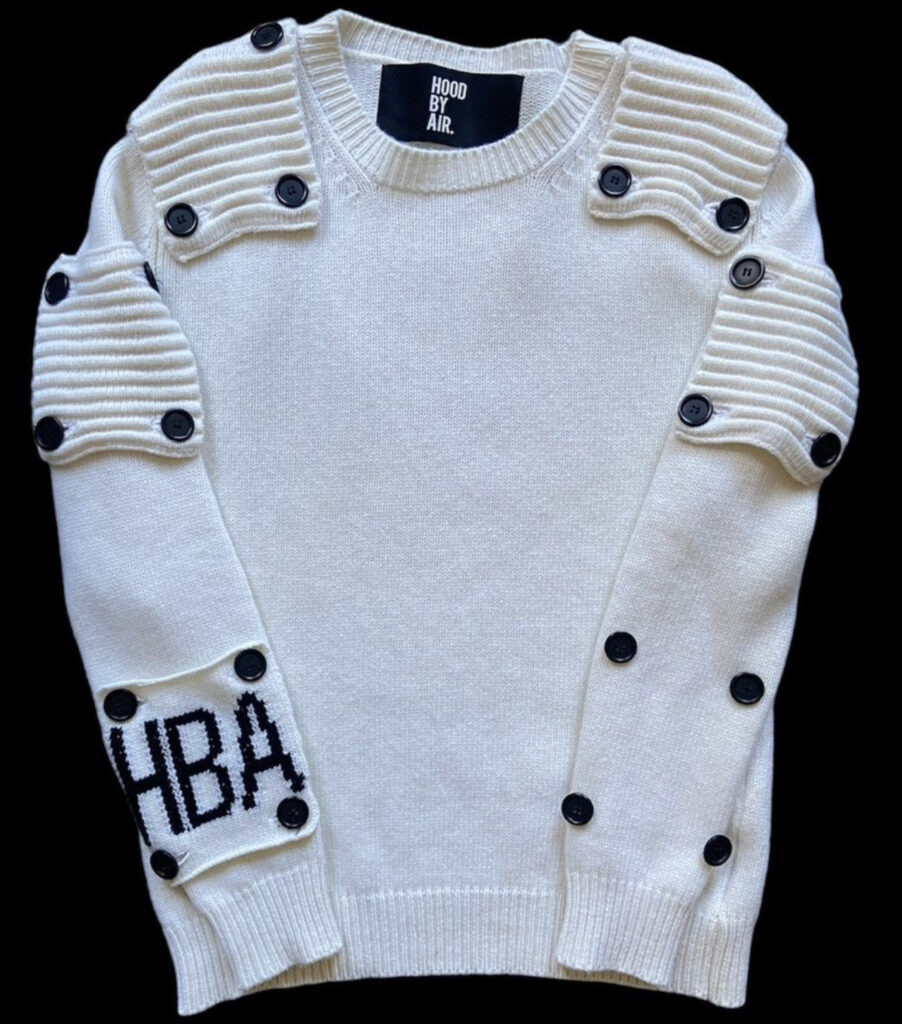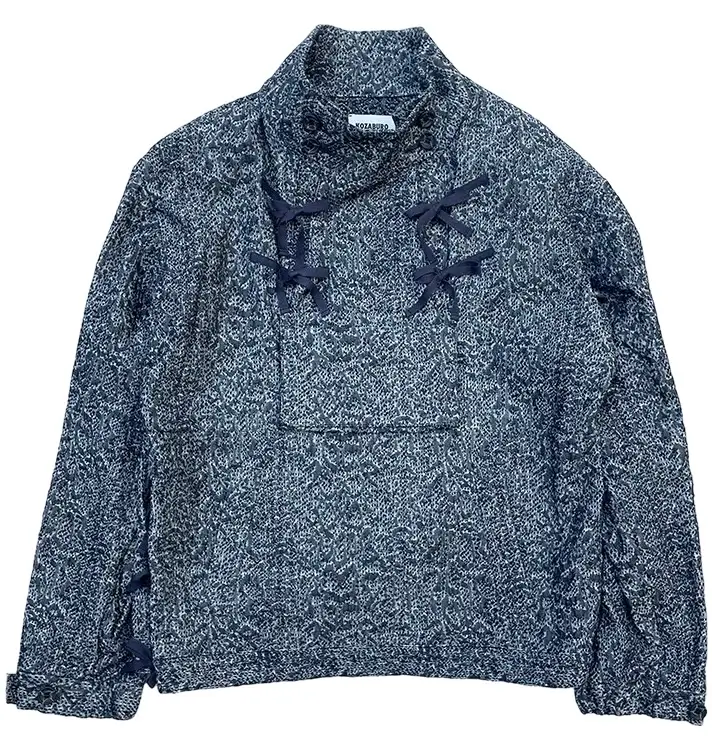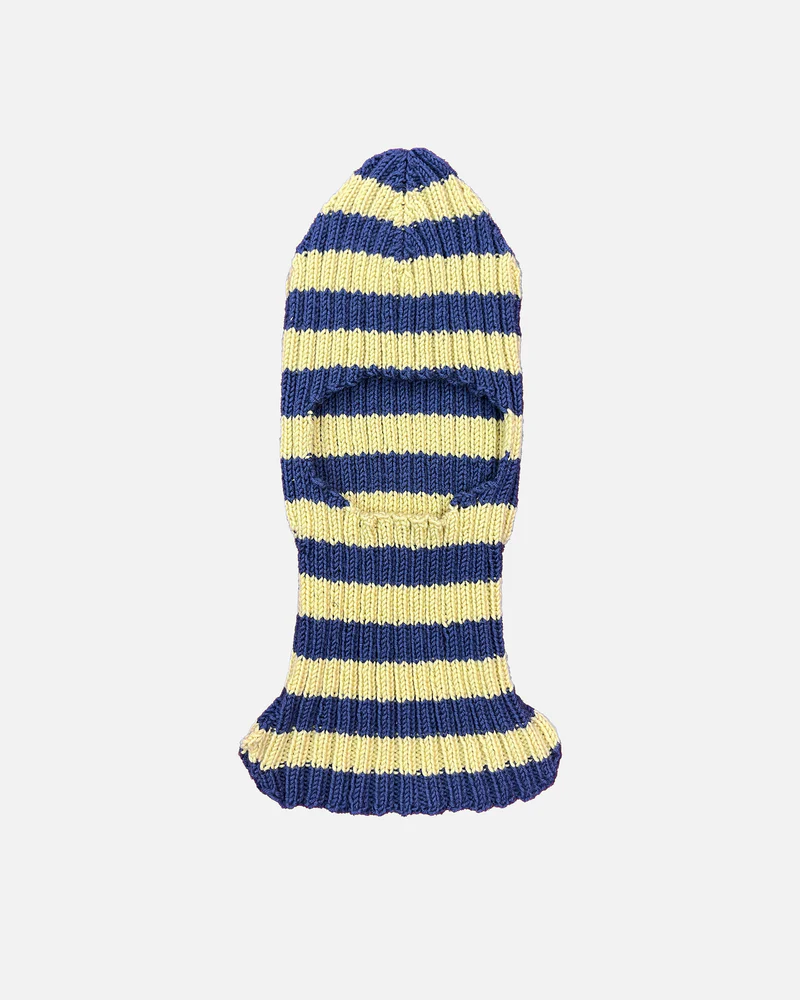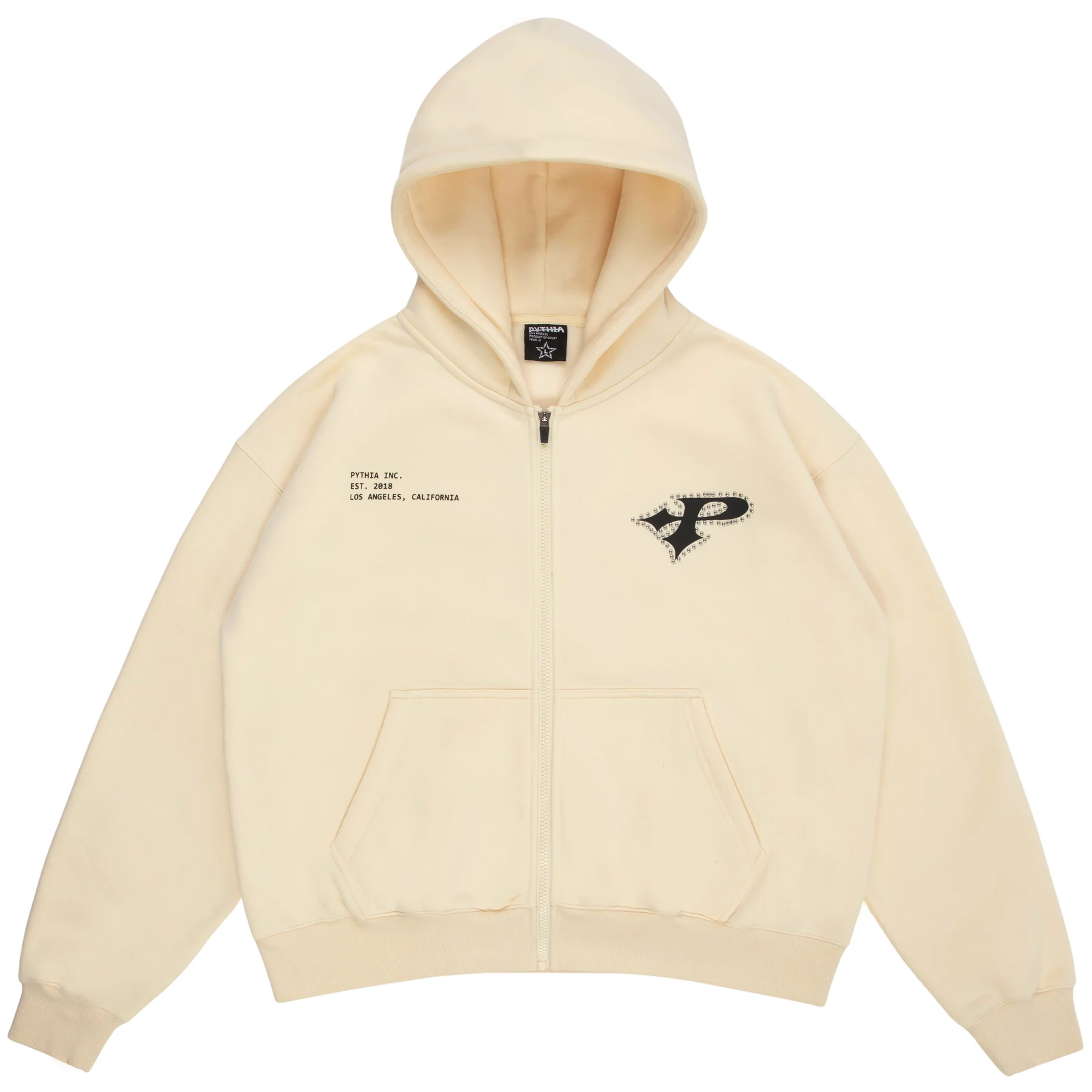In the ever-evolving landscape of contemporary fashion, certain pieces stand out not just for their aesthetic appeal, but for their ability to challenge and redefine the very concept of what clothing can be. The Hood by Air Armor Sweater is one such piece. It encapsulates the brand’s ethos of deconstructing traditional ideas around gender, luxury, and streetwear, while simultaneously offering a tactile and visually compelling garment. Created by Shayne Oliver, the visionary founder of Hood by Air (HBA), the Armor Sweater is more than just a piece of knitwear—it’s a sartorial manifesto that demands closer inspection.
This critical exploration delves into the design elements, craftsmanship, and cultural implications of the Armor Sweater, unpacking how it fits within HBA’s broader narrative of radical self-expression and subversive aesthetics. With its distinct construction, avant-garde appeal, and symbolic undercurrents, the Armor Sweater redefines the boundaries between clothing and art, making it a significant contribution to the discourse around high-fashion streetwear.
Armor as Fashion
At first glance, the Armor Sweater may appear deceptively simple. Its boxy silhouette and oversized proportions give it an air of casual nonchalance. But a closer look reveals a complexity that is anything but straightforward. The piece draws its inspiration from medieval armor, reinterpreting the idea of protection and strength through the lens of contemporary streetwear. The sweater’s structure is defined by exaggerated shoulders, ribbed panels, and intricate stitching that mimic the joints and plates of traditional body armor. These elements create a visual language that communicates power and defiance, yet the garment remains soft and pliable, challenging preconceived notions of rigidity and strength.
The choice of materials plays a crucial role in achieving this effect. The Armor Sweater is crafted from a dense, heavyweight knit that holds its shape without appearing stiff. This textile choice allows for a sculptural quality, enabling the garment to drape and fold in unexpected ways. The ribbed sections, in particular, serve both an aesthetic and functional purpose, providing elasticity and comfort while visually segmenting the sweater into sections that resemble the plates of a suit of armor.
Color also plays a key role in the design. The Armor Sweater is available in a limited palette of muted, industrial tones—think charcoal, slate, and deep black. These hues evoke a sense of anonymity and utilitarianism, aligning with HBA’s broader critique of luxury fashion’s obsession with opulence and overt branding. The absence of bright colors or logos directs attention to the garment’s form and texture, encouraging the viewer to appreciate the subtleties of its construction.
The sweater’s neckline and cuffs are finished with raw hems, a signature of HBA’s aesthetic that speaks to the brand’s rejection of traditional ideas around refinement and polish. These details lend the garment a sense of incompleteness, as if it were a work in progress—an apt metaphor for the constant evolution of identity and self-presentation. In this way, the Armor Sweater becomes a visual representation of the wearer’s vulnerability and strength, encapsulating the paradox at the heart of HBA’s design philosophy.
Merging Technique with Concept
Hood by Air is renowned for its ability to blend avant-garde design with meticulous craftsmanship, and the Armor Sweater is no exception. Each piece is constructed with a level of care and precision that belies its ostensibly rugged appearance. The knit fabric, for instance, is woven using a combination of traditional techniques and modern technology, resulting in a material that is both dense and breathable. This balance is essential, as it ensures the sweater maintains its structured silhouette without sacrificing comfort.
The intricate stitching patterns that adorn the ribbed panels are another testament to the garment’s craftsmanship. These stitches are not merely decorative—they are functional reinforcements that prevent the knit from stretching out of shape over time. This attention to detail is emblematic of HBA’s approach to fashion, where each element serves a purpose beyond aesthetics. Even the raw hems, seemingly haphazard, are carefully executed to ensure they maintain their appearance without fraying excessively.
Moreover, the Armor Sweater’s construction incorporates a technique known as “linked seams,” which involves manually connecting the knitted panels rather than using a traditional cut-and-sew method. This technique results in a seamless finish that enhances the sweater’s durability and allows it to move more naturally with the body. It’s a labor-intensive process that underscores HBA’s commitment to quality and innovation, setting the Armor Sweater apart from mass-produced knitwear.
The choice to invest in such meticulous craftsmanship is significant, particularly for a brand like HBA, which has often been positioned as an outsider within the fashion industry. By demonstrating a mastery of traditional techniques while simultaneously subverting them, Oliver positions HBA as a disruptor that can operate within the established rules of fashion while still rewriting them.
Defying Norms and Expanding Possibilities
Hood by Air has long been known for its defiance of conventional fashion norms, and the Armor Sweater is a continuation of this legacy. The piece sits at the intersection of multiple cultural narratives—streetwear, high fashion, and gender fluidity. It challenges the viewer to reconsider the associations typically made with clothing, asking what it means for a sweater to convey protection, power, or even aggression. These are not qualities traditionally ascribed to knitwear, which is often seen as cozy, domestic, or unassuming.
In repurposing the visual language of armor, the Armor Sweater also comments on the idea of clothing as a form of protection, both physical and psychological. The exaggerated shoulders and ribbed panels create a sense of bulk and presence, suggesting a kind of modern-day fortification against the external world. Yet the softness of the knit fabric and the pliability of the garment subvert this notion, implying that true strength lies not in impenetrability, but in adaptability and resilience.
This duality is particularly resonant in the context of gender expression. HBA has always embraced a fluid approach to clothing, creating pieces that defy easy categorization as “masculine” or “feminine.” The Armor Sweater, with its blend of traditionally masculine and feminine elements, encapsulates this ethos. The structured shoulders and ribbed panels suggest a kind of hypermasculinity, while the softness of the knit and the relaxed fit undermine this reading, creating a garment that exists outside of binary gender norms.
By blurring these boundaries, the Armor Sweater becomes a powerful statement on the fluidity of identity. It invites the wearer to experiment with self-presentation, to embrace contradictions, and to redefine what it means to be strong, vulnerable, or even fashionable. In this way, the Armor Sweater is more than just a piece of clothing—it is a wearable exploration of identity and power.
The choice to evoke armor in a fashion piece is laden with symbolism. Historically, armor has been associated with protection, strength, and warfare—qualities that seem at odds with the softness and pliability of knitwear. By combining these seemingly disparate elements, the Armor Sweater subverts traditional associations and asks the viewer to consider what it means to feel protected or strong in today’s world.
In a cultural moment marked by heightened vulnerability—both physical and emotional—the Armor Sweater offers an intriguing commentary. It suggests that protection need not come in the form of rigid barriers or impenetrable surfaces. Instead, it can be found in flexibility, in the ability to adapt and respond to changing circumstances. This reading is reinforced by the garment’s construction, which allows it to move and stretch in response to the body’s movements, rather than constricting or restraining them.
Furthermore, the Armor Sweater’s raw hems and unfinished details speak to the idea of imperfection as a form of authenticity. In a fashion industry that often prizes polish and perfection, these elements are a reminder that strength can coexist with flaws, and that beauty can emerge from what is incomplete or unresolved. This is a radical proposition, particularly in a world that often equates luxury with flawlessness.
Impression
Ultimately, the Hood by Air Armor Sweater occupies a space somewhere between fashion and art. Its sculptural quality, combined with its conceptual depth, positions it as a piece that is meant to be contemplated as much as it is worn. It challenges the viewer to consider the relationship between form and function, between aesthetics and utility. In doing so, it opens up new possibilities for what fashion can be—a medium for exploring complex ideas and emotions, rather than merely a vehicle for aesthetic pleasure.
In many ways, the Armor Sweater is emblematic of Hood by Air’s broader project. It is a piece that defies easy categorization, that exists outside of established norms and categories. It is a reminder that fashion, at its best, is not about conforming to trends or expectations, but about challenging them. By creating a garment that is both protective and vulnerable, structured and soft, Oliver has crafted a piece that invites the wearer to embrace contradictions and, in doing so, to redefine themselves.
The Hood by Air Armor Sweater, therefore, is not just a garment—it is a statement, a provocation, and a work of art. It embodies the power of fashion to question, to disrupt, and to inspire. And in a world that often feels increasingly fragmented and uncertain, it offers a vision of strength that is rooted not in rigidity, but in the courage to be both armored and open.
No comments yet.








